Pasta is usually a good way to spread out a precious protein, and this light sauce made with butter and olive oil allows fresh crabmeat to play the starring role. Since the crabmeat is already cooked, this sauce comes together in about the same time it takes to cook the pasta. Recipe adapted from Chef Bobby Flay's famous crab spaghetti.

This recipe is especially nice when fresh crabs are in season, if they're available to you, and you don't mind picking the meat out of a fresh cooked crab. Otherwise, packaged and frozen crabmeat is available year round but rather pricy, so this would be nice for a special occasion.
You might serve this alongside a kale and baby spinach salad for something light, a cup of butternut squash and apple soup for something warming. or a side of beans 'n greens for something hearty.
If you like quick cooking, Italian inspired seafood dishes, you might also like this recipe for 15 minute calamari puttanesca.
Jump to:
Ingredients
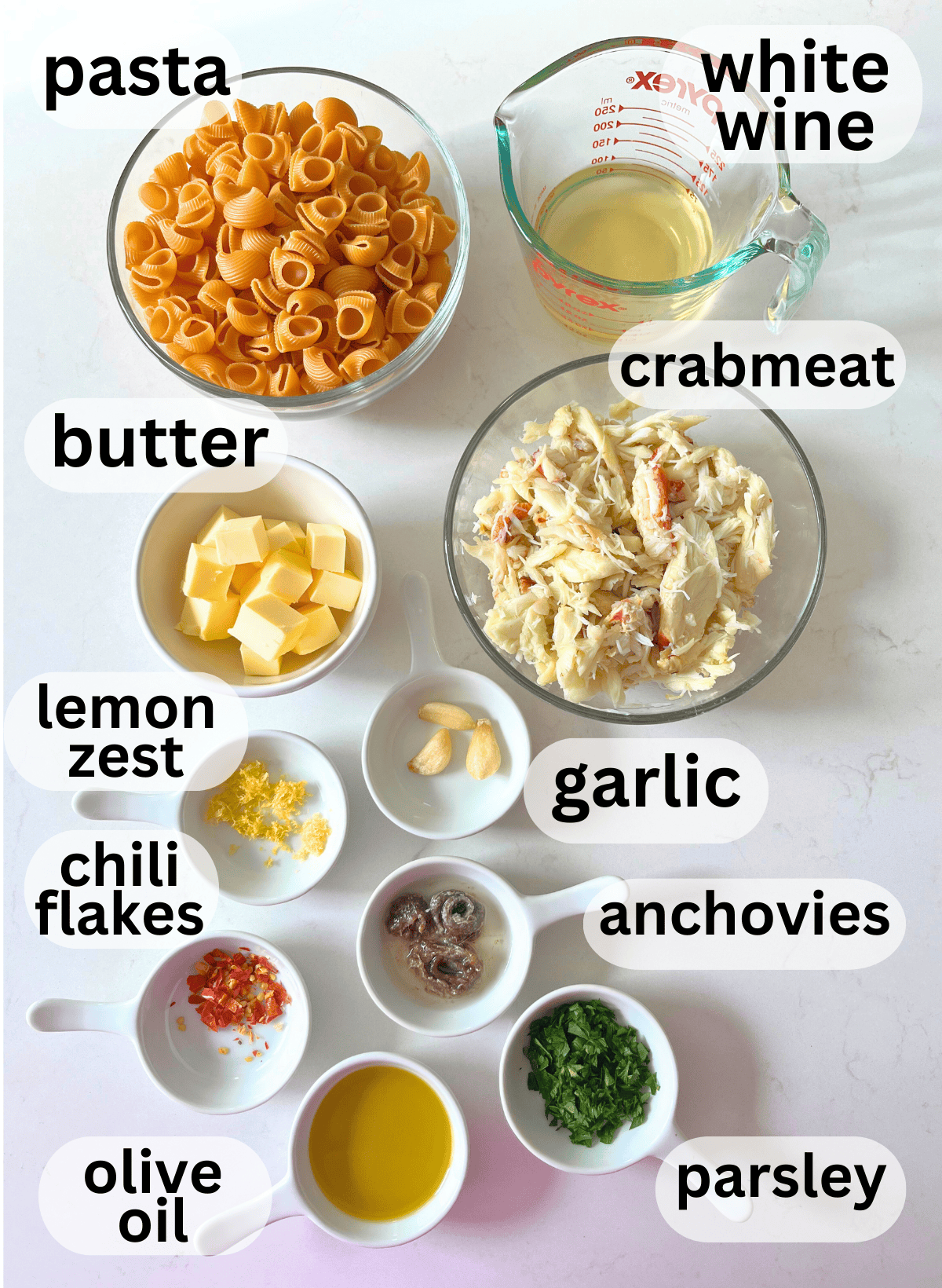
- Dried Pasta - I use chickpea pasta because it has more fiber (and I hate regular pasta from my time working in restaurants where I ate ie nearly everyday for staff meal). I find the Banza brand to be the most like regular pasta, while the Whole Foods brand is tougher but has more fiber than the Banza brand.
- For the pasta shape, I know people really like crab spaghetti or linguine, but I just find it hard to hold onto the pasta. I used shells because it reminds you of the crab shell, and you can easily pick it up with crabmeat in a spoon.
- Crabmeat - Dungeness crabmeat is known to the sweetest, tastiest, and most expensive. If you would rather not buy live crabs when in season, cook, and pull out the meat yourself, you can buy already picked crabmeat. It also comes in refrigerated and room temperature cans, but it probably won't have too much flavor. I would use the canned version in a heartier dish that masked the flavor with dairy like a crab dip.
- White Wine.- Use a dry (unsweet) white wine like Sauvignon Blanc, Pinot Grigio, or unoaked Chardonnay. Wine adds acidity that is essential for Italian seafood dishes. It also adds tertiary flavors that wine has, but you can substitute with fish stock or water and lemon juice if you don't have wine.
- Chili Flakes - Also known as red pepper flakes or dried pepperoncini, these are sold in nearly every grocery store.
- They have large red flakes along with yellowish seeds. You can add even more of this to make it spicy.
- I don't add black pepper to this recipe, since I usually use one or of the other of both ingredients to keep it from tasting too spicy or peppery.
Optional Garnishes
- Traditional: Toasted Breadcrumbs - This adds a little crispiness to the dish. I ddi try it but didn't think it added too much to the experience.
- Out of the box: Crispy Chickpeas - I do like adding crispy chickpeas because it adds more fiber. With the shell shaped pasta, the chickpeas are easy to add to the spoonful.
- Parmesan Cheese? - You may have heard the adage that they don't add cheese to seafood dishes in italy. I don't add it to this recipe but understand if you really like cheese with your pasta.
See recipe card for quantities.
Instructions
This dish comes together very quickly, so have all the ingredients chopped and ready to go beforehand.
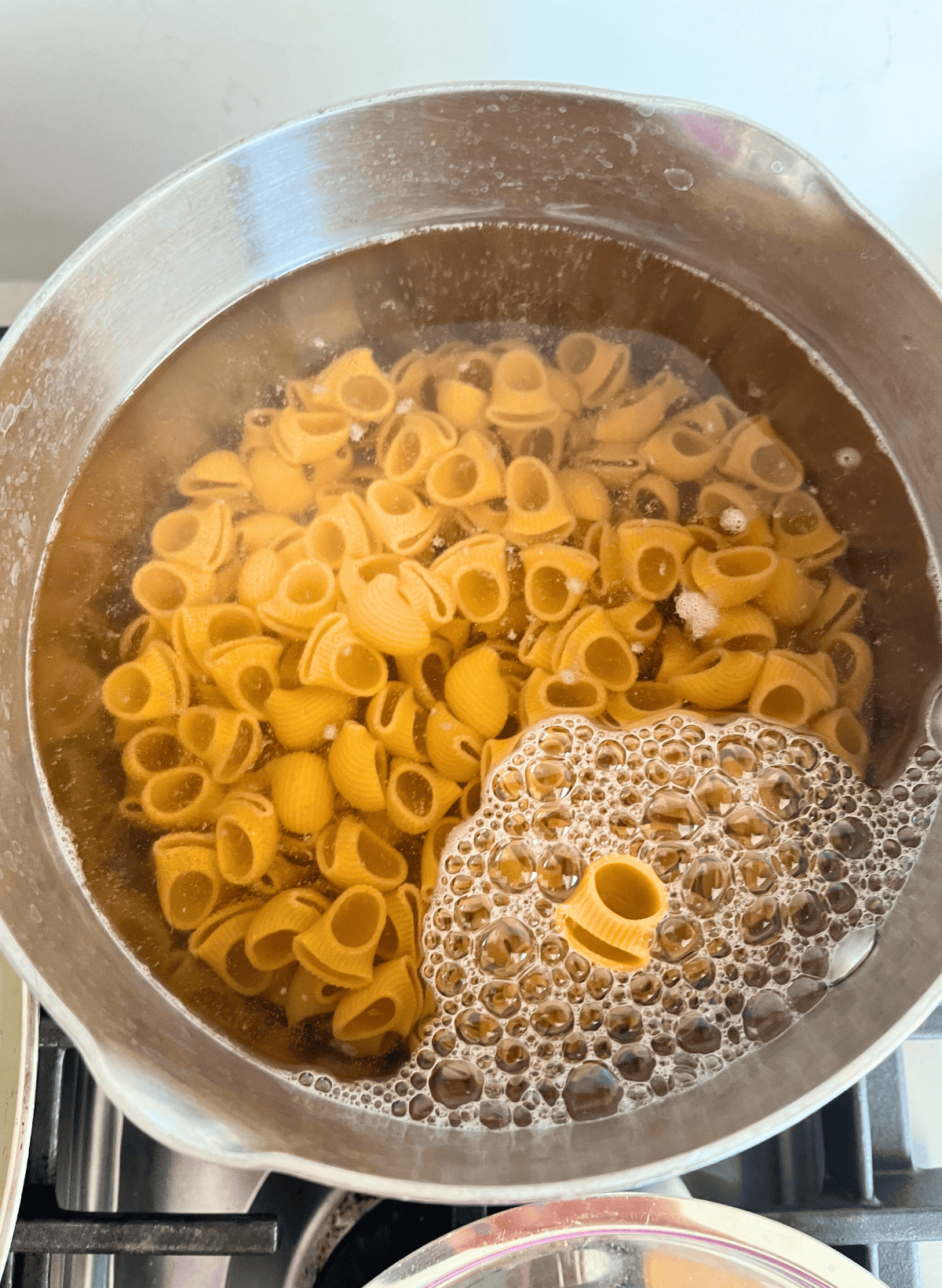
Bring a pot of water to the boil. Add a bit of salt per the pasta package instructions, and drop in the pasta. You don't want to add too much salt because we'll need some of the pasta water later for the sauce.
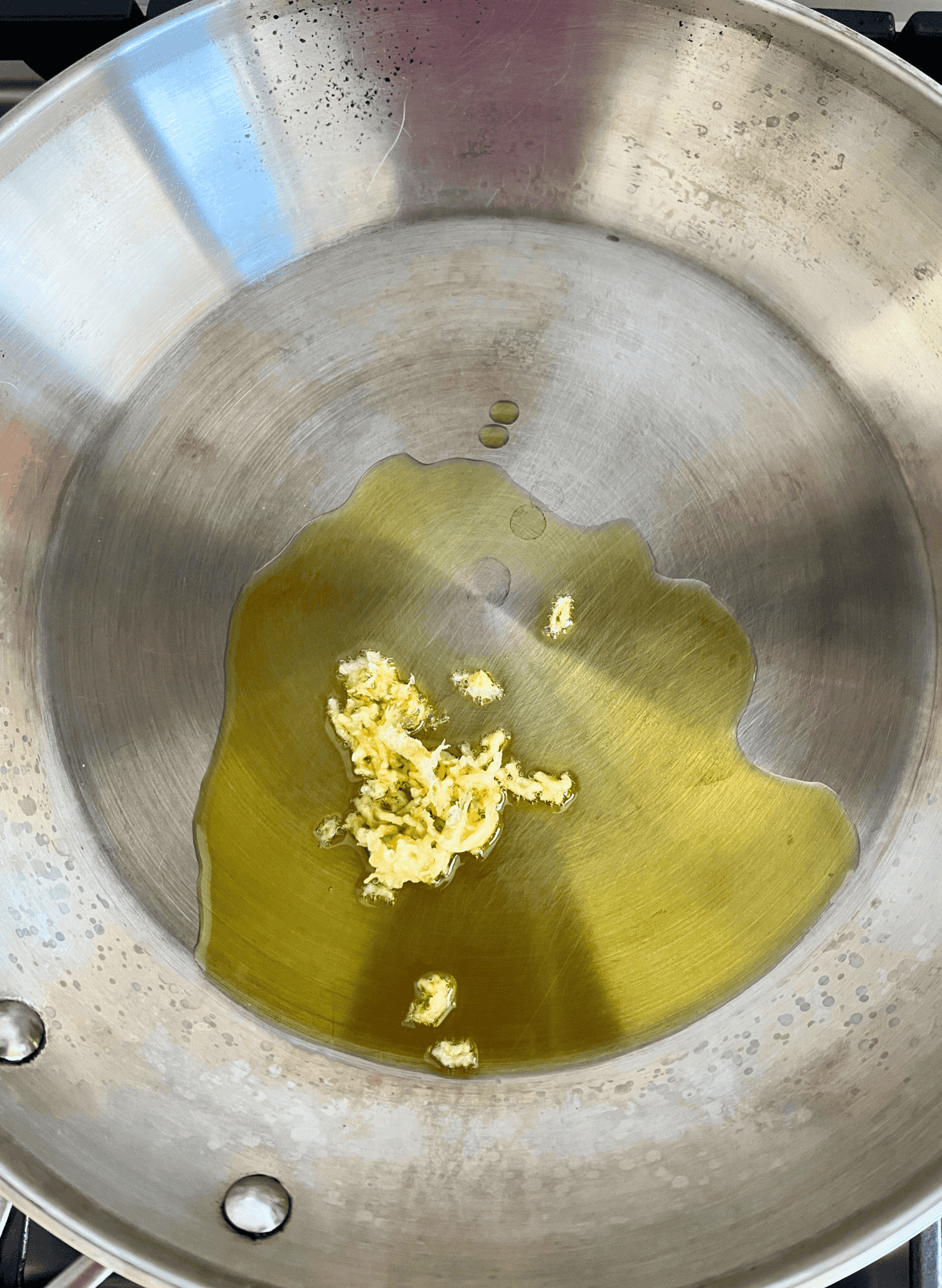
Put the olive oil and garlic in a cold pan, and bring up to medium heat. Starting with a cold pan keeps the garlic from burning or browning right away.
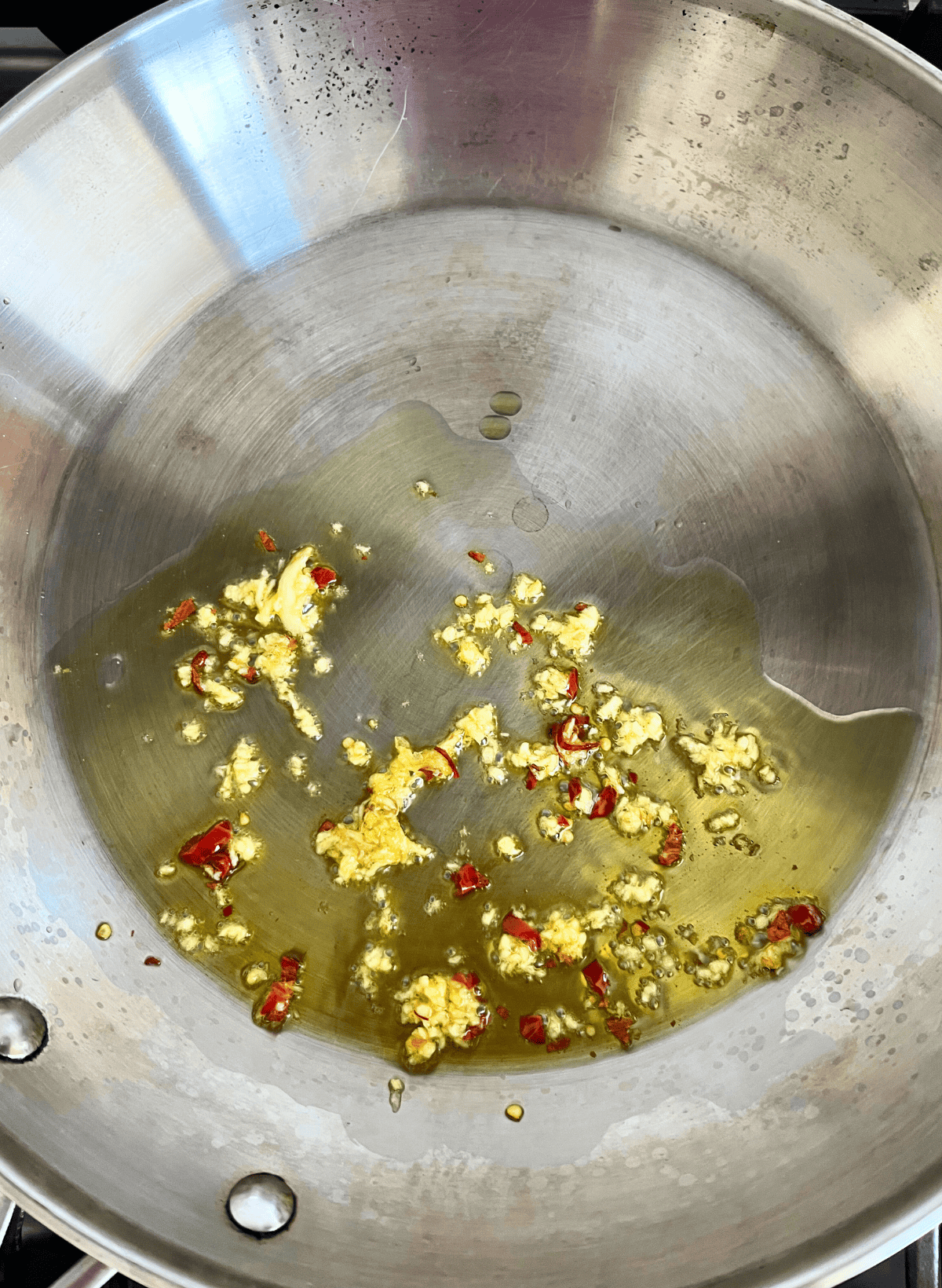
When the garlic starts to sizzle, add the chili flakes.
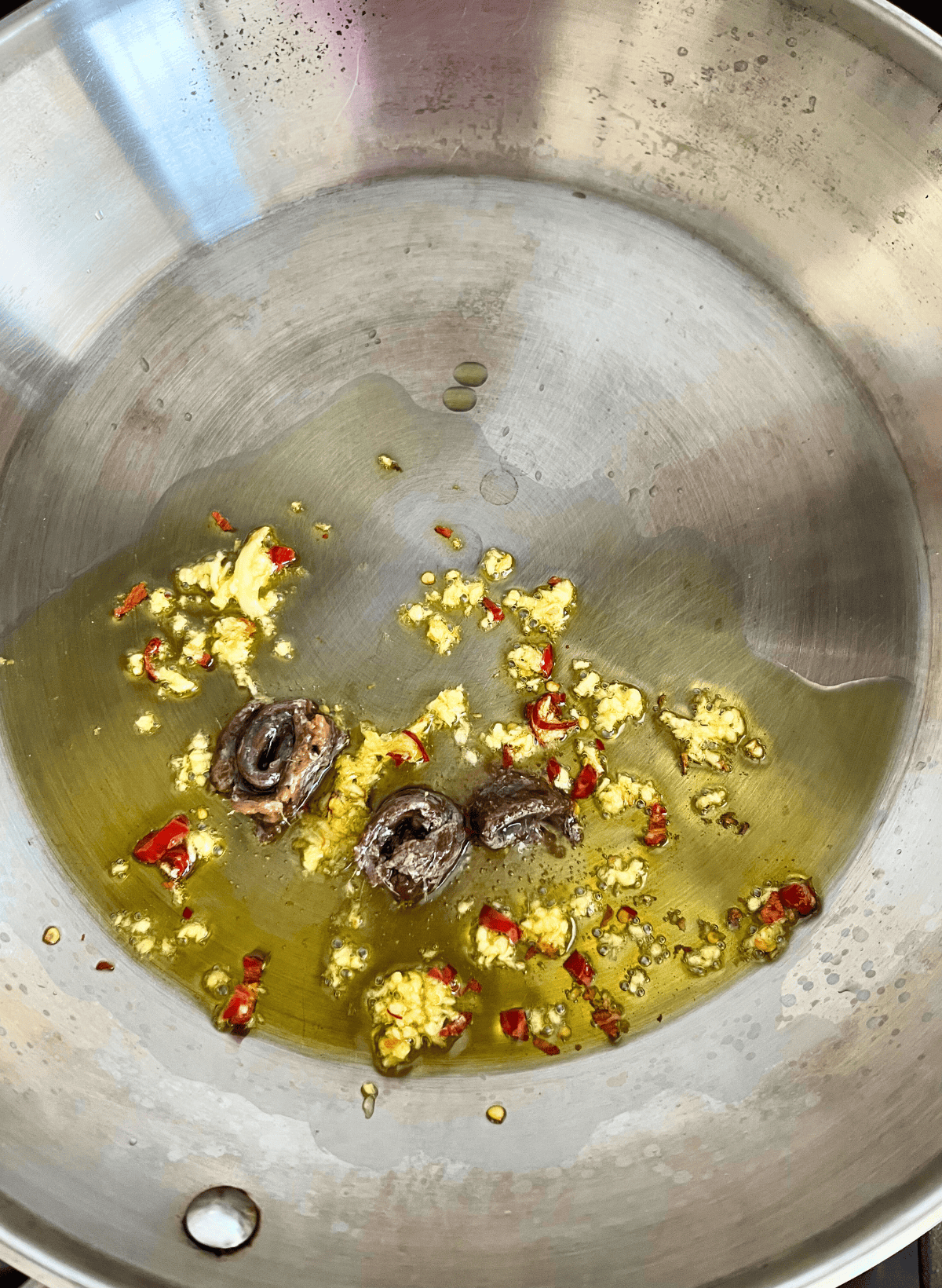
Add the anchovies.
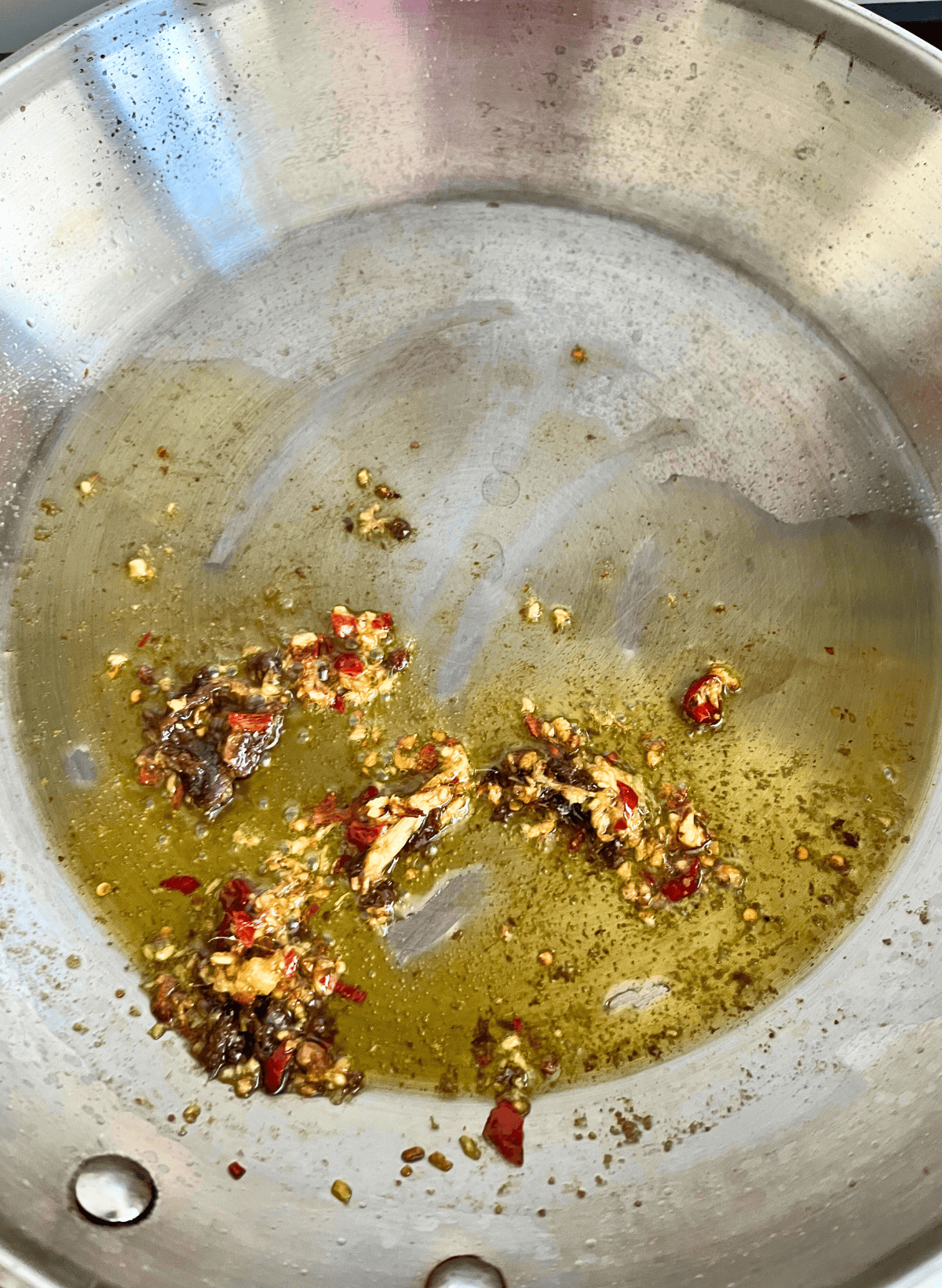
Break up the anchovies with a spoon. Lower the heat, if the garlic starts to brown.
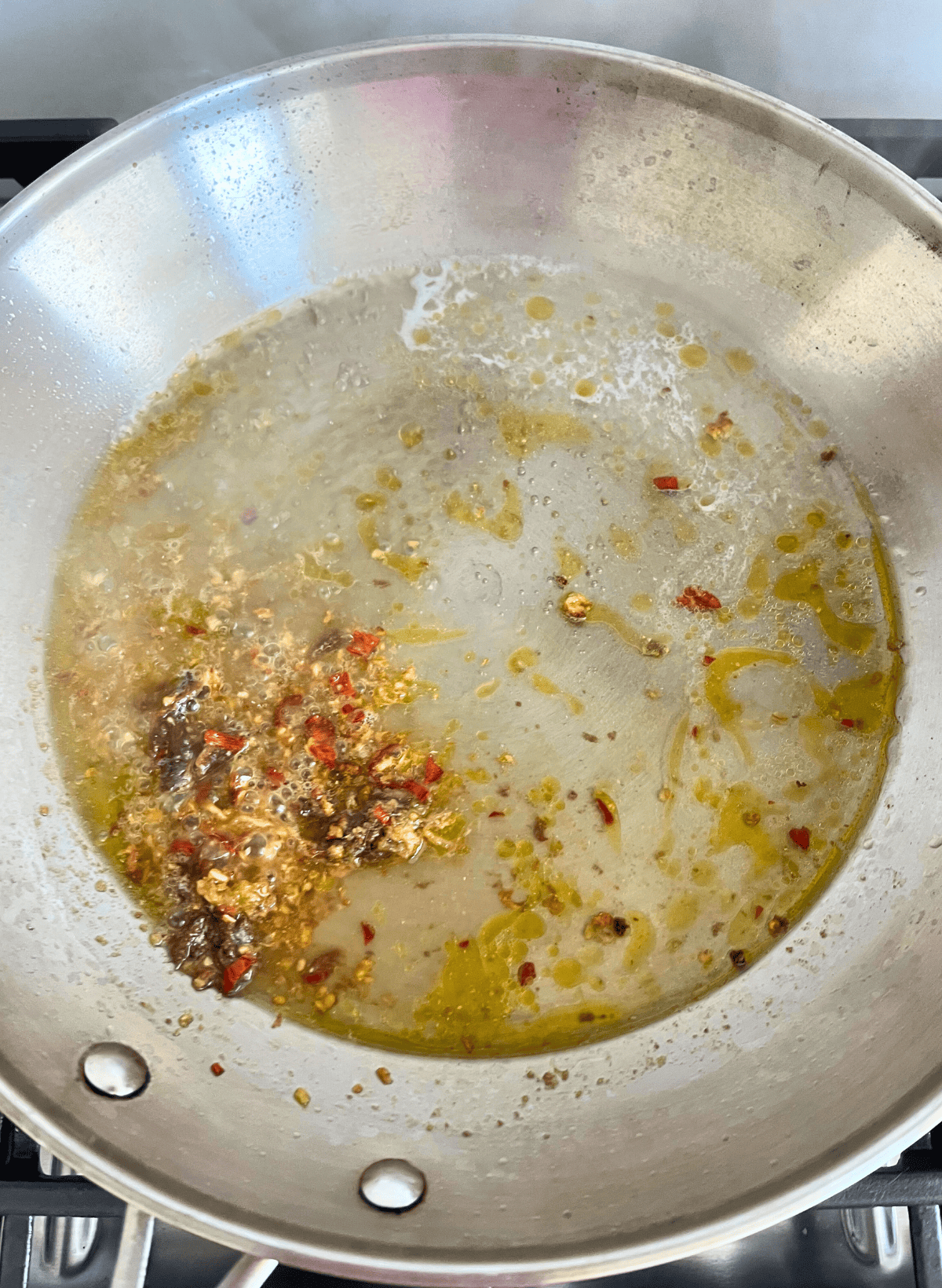
Add the white wine to the pan.
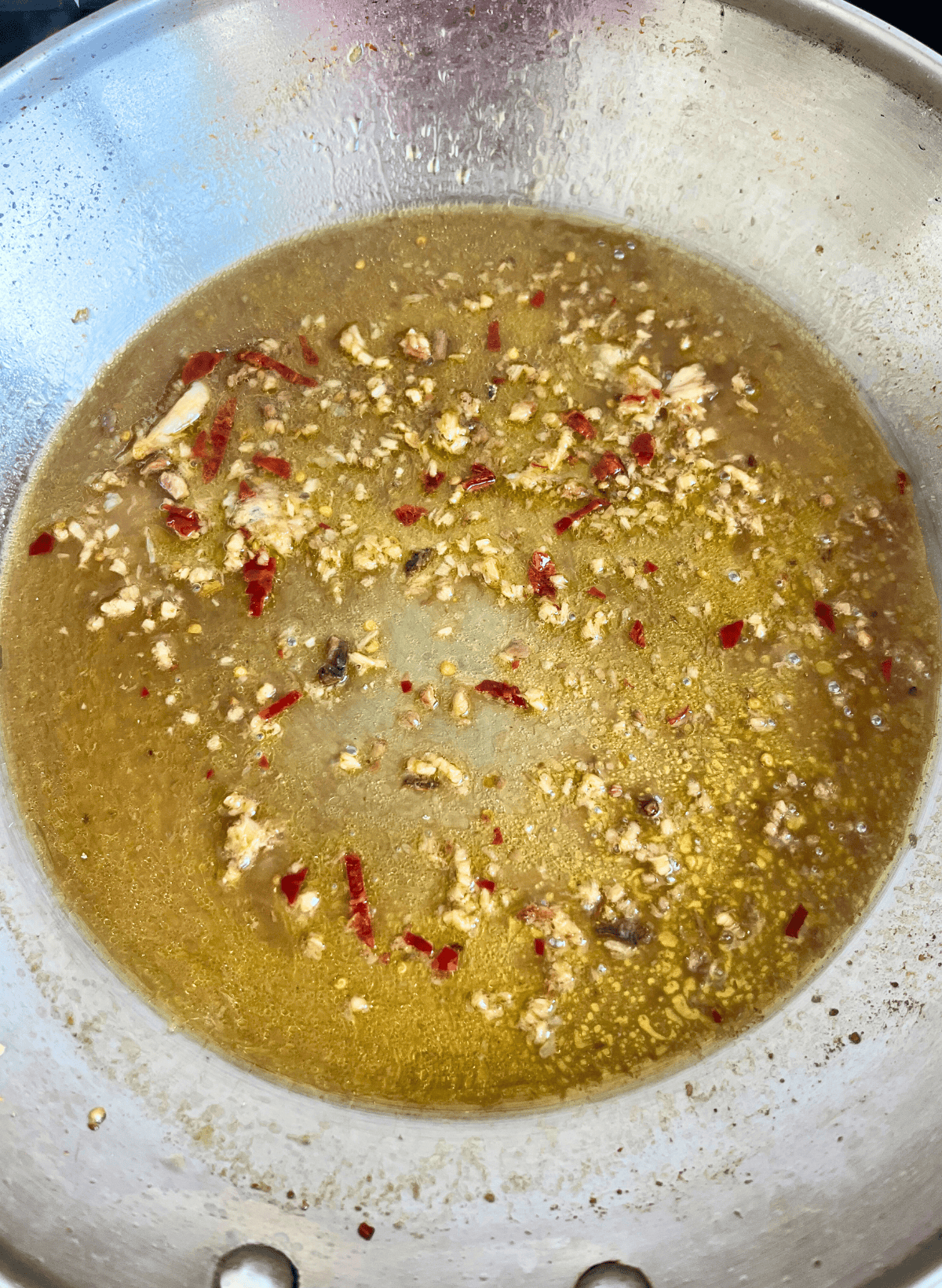
Bring the liquid up to a simmer, and cook until it's reduced by about half. We want to burn off the alcohol in the wine and concentrate the sauce before adding the butter.
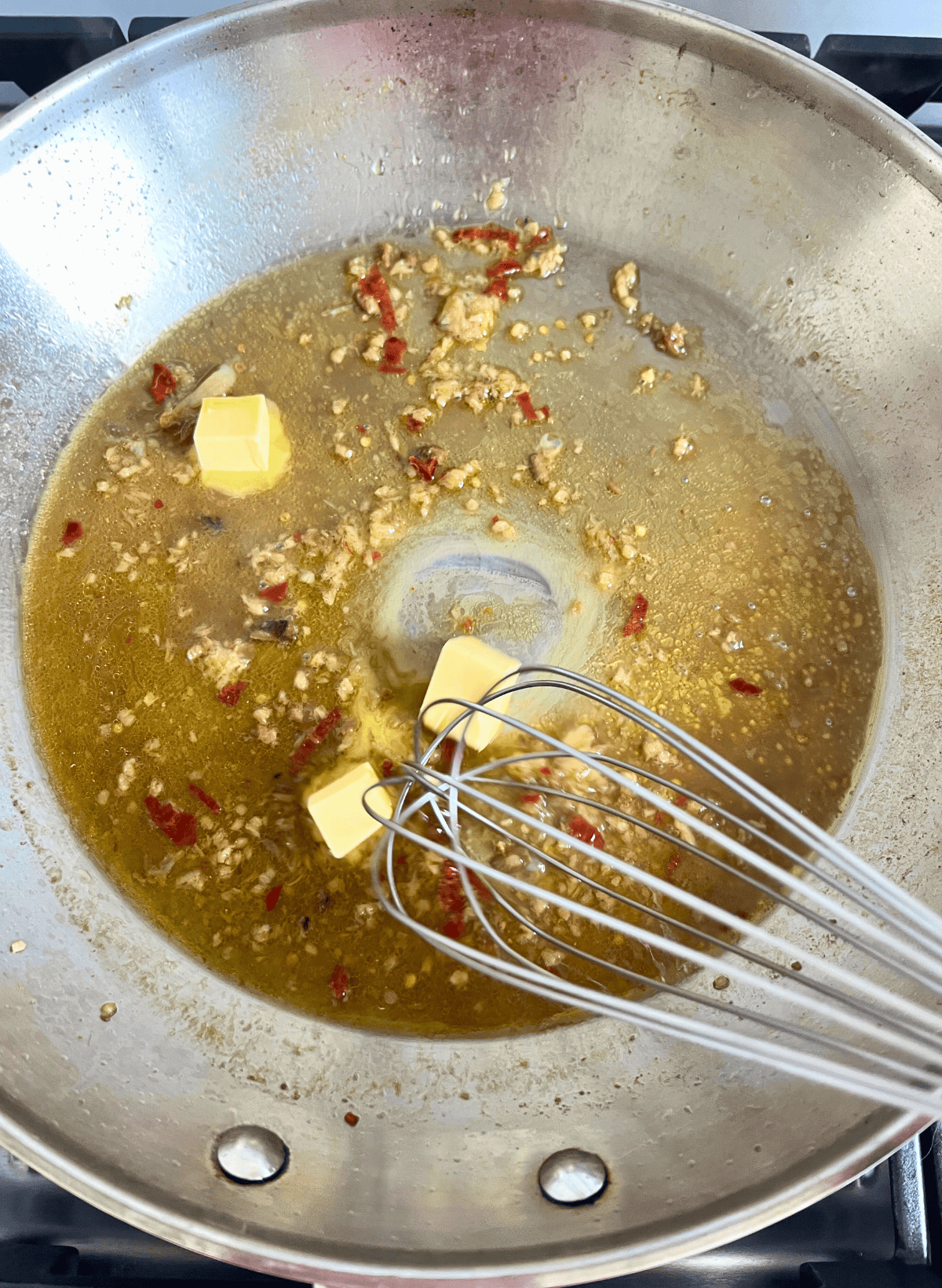
Over low heat, stir in the cold butter a few pieces at a time.
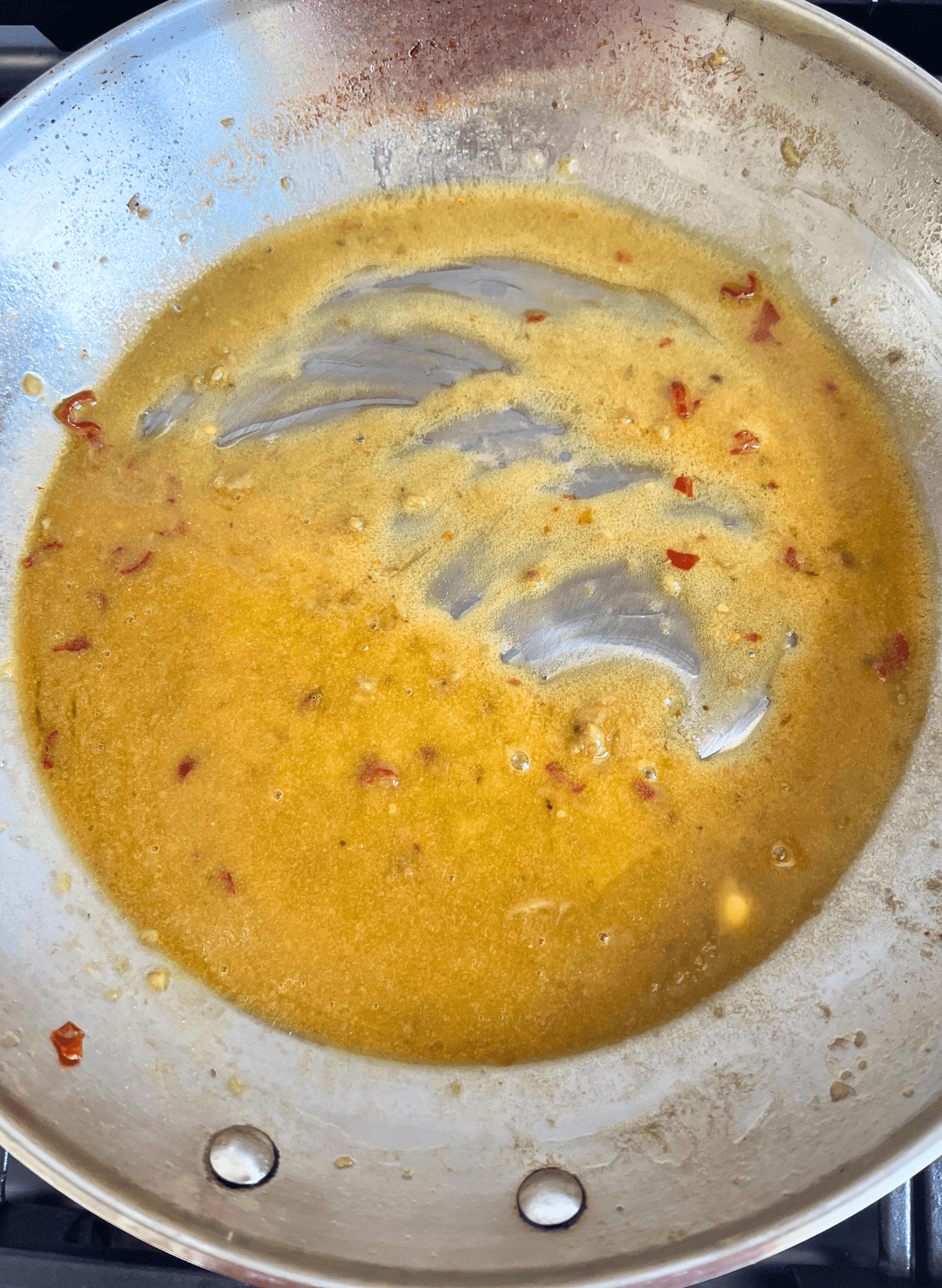
Once all the butter is stirred in, you should have a nice emulsion between the butter and white wine liquid.

At this point, the pasta should be done cooking per the package directions to the al dente stage. It should still have some bite rather than completely cooked through and soft for a baby to eat. Save a cup of the pasta water.
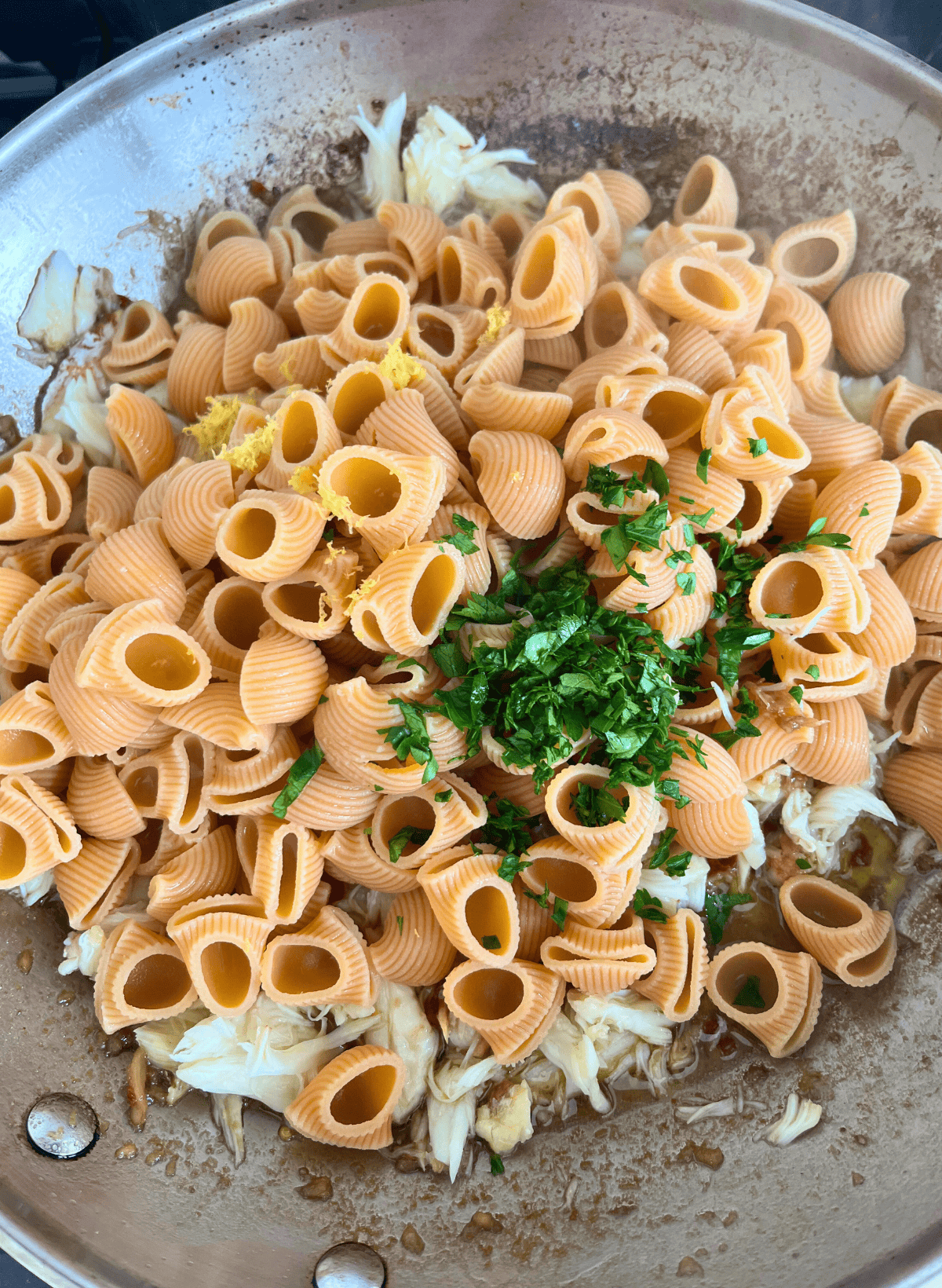
Add the drained pasta to the sauce along with the crabmeat, parsley, and lemon zest. Add some of the reserved pasta water to help the sauce coat all food.
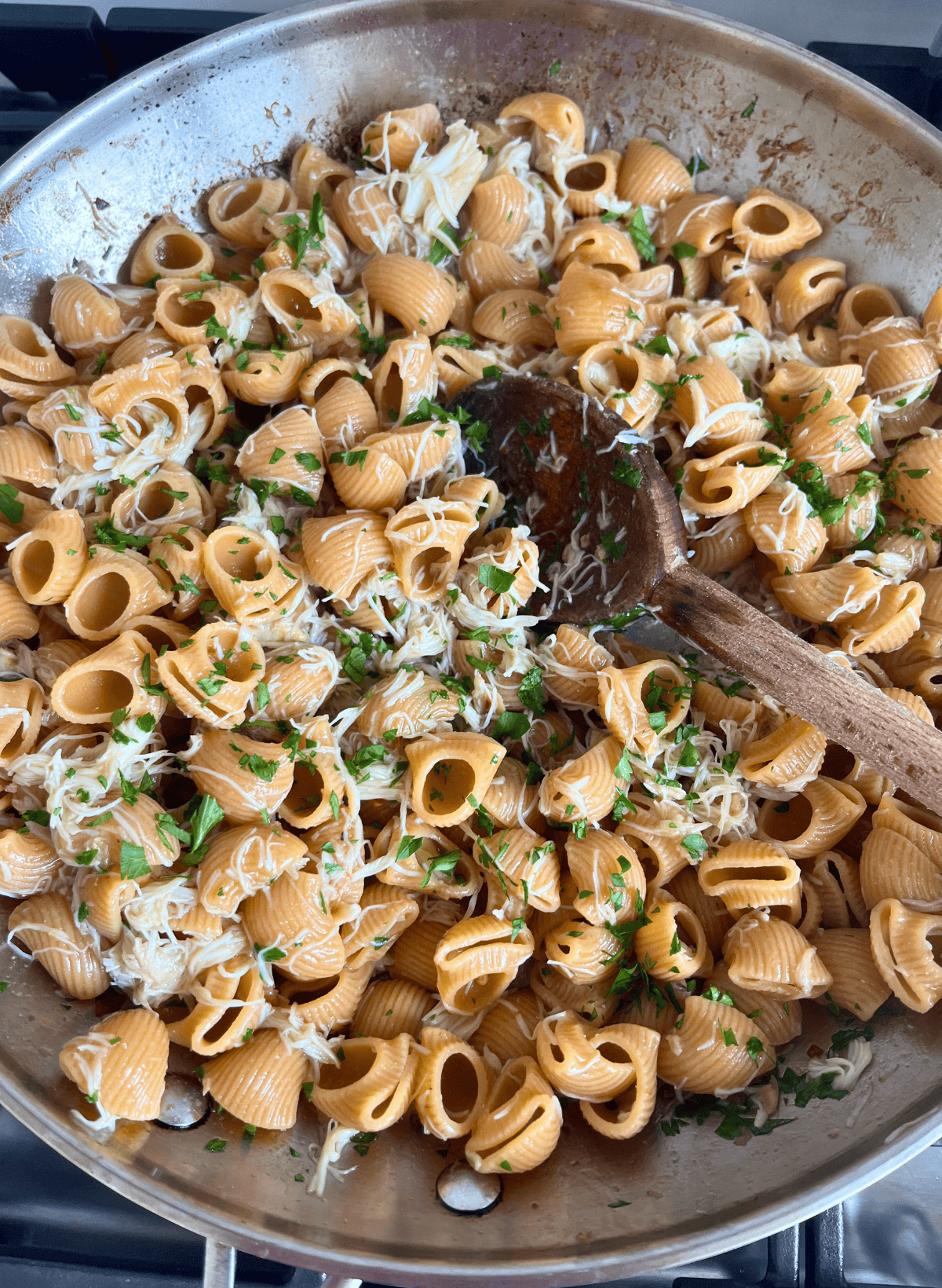
Stir over low heat for a couple minutes until combined.
To toss or saute pasta? ln Northern Italy, they saute the pasta with the sauce, while in Southern Italy, they traditionally toss the pasta with the sauce in a bowl. At home, I would saute if it's a pound or less of pasta. If it's for a crowd, I would toss in a separate larger bowl.
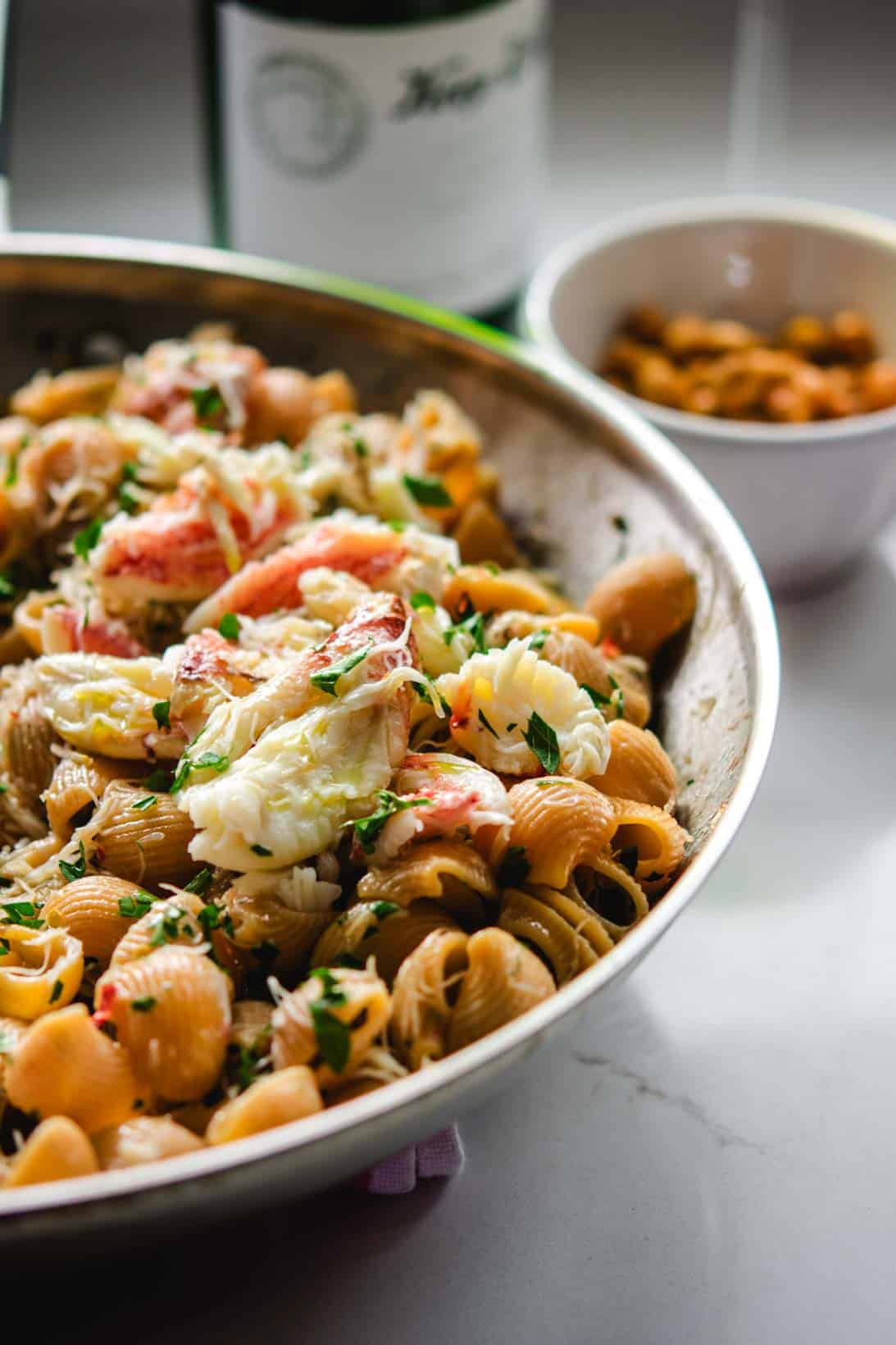
Storage
Store in an airtight container in the fridge, and consume within a day or two. Fresh crabmeat, though cooked, should be consumed quickly or it can start to smell off.
Tips to make it better @home
- If you don't have white wine, you can use use ⅓ c water and 1 Tb fresh squeezed lemon juice.
- If you don't want to cook your own fresh crabs, buying cooked crabs in the shell and pulling the meat out will generally be fresher than buying already picked crabmeat. (This would be a great use for the cooked Dungeness crabs sold at Costco!)
- For easy cleanup, serve directly from the skillet, and let everyone help themselves.
Related Seafood Recipes
Side Dishes
Recipe
Crab Pasta with White Wine Garlic Sauce
Ingredients
- 8 oz dried chickpea pasta, or other dried pasta or 12 oz fresh pasta
- 2 Tb extra virgin olive oil
- 2 teaspoon minced garlic this is about 2 large cloves
- ¼ teaspoon red pepper flakes use more if you like it spicy
- 3 ea anchovies packed in oil, or rinsed if packed in salt
- ½ c dry white wine See Note 1 for substitutions
- ¼ c cold butter cut into smaller chunks
- ½ lb lump crabmeat picked through to remove any shell peices
- 3 Tb roughly chopped fresh parsley save 1 Tb for garnish
- 1 teaspoon lemon zest zest from about 1 lemon
Optional garnish
- black pepper
- toasted breadcrumbs seasoned with salt
- crispy chickpeas
Instructions
- Bring at least 2 qt of water to a boil. Add salt and cook the pasta according to the package directions. While it's cooking you can proceed with the steps below. Once the pasta is cooked to the al dente stage (where it still has some bite), reserve 1 cup of the cooking water and drain the pasta. Set aside until it's ready for the sauce.
- Put the garlic and olive oil in a skillet and set over medium heat. When the garlic starts to sizzle a little bit, add the red chili flakes. Keep stirring to keep the garlic from browning, and lower the heat if needed.
- Add the anchovies to the pan. Stir a bit just to break them up.
- Add the white wine to the pan and stir up any bits stuck to the pan. Bring the wine to a simmer and reduce the sauce until it looks like it's reduced by about half.
- Over low heat, whisk in the butter a few chunks at a time so you get a smooth, emulsified sauce. If it boils, the butter and liquid will separate which is not ideal but still okay. We want a smooth texture rather than a greasy one.
- Add the cooked pasta (which should still be hot), crabmeat, lemon zest, and 2 Tb parsley to the pan. Add about ½ c of the reserved pasta water to help the sauce coat all the food. Stir for a couple minutes over low heat to gently help all the ingredients meld together.
- Garnish with the reserved parsley and any optional garnishes.
Notes
- If you don't have white wine, you can use use ⅓ c water and 1 Tb fresh squeezed lemon juice.
- If you don't want to cook your own fresh crabs, buying cooked crabs in the shell and pulling the meat out will generally be fresher than buying already picked crabmeat. (This would be a great use for the cooked Dungeness crabs sold at Costco!)
- For easy cleanup, serve directly from the skillet, and let everyone help themselves.
Nutrition
Food safety
- Cook to a minimum temperature of 165 °F (74 °C)
- Don't leave food sitting out at room temperature for extended periods
- Never leave cooking food unattended
- Use oils with high smoking point to avoid harmful compounds
- Always have good ventilation when using a gas stove
See more guidelines at USDA.gov.

Fortune Cookie 🥠
Don't let yesterday use up too much of today.
Will Rogers

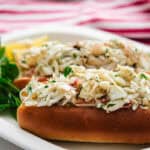
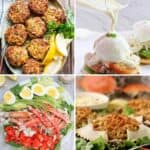
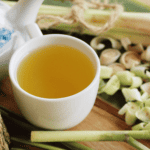
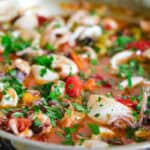
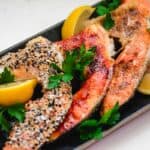
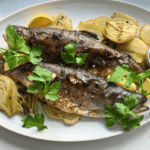
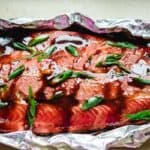
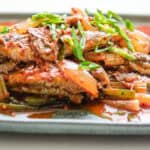
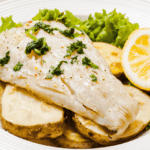
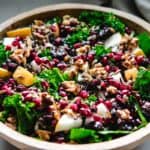
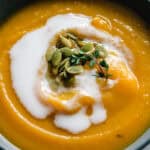
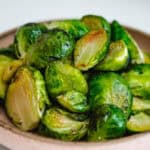

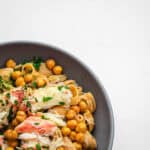
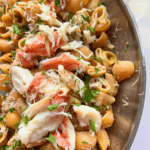




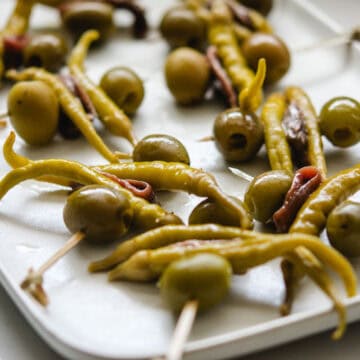
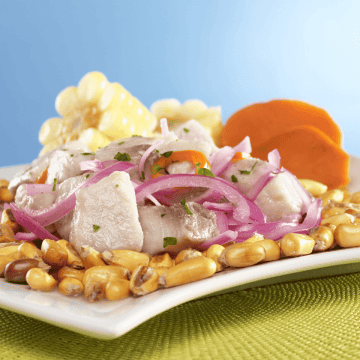
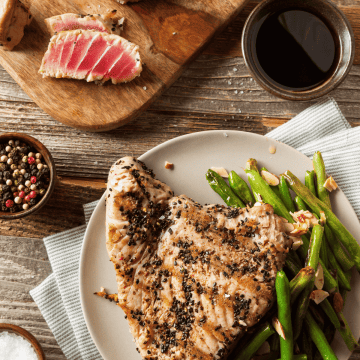
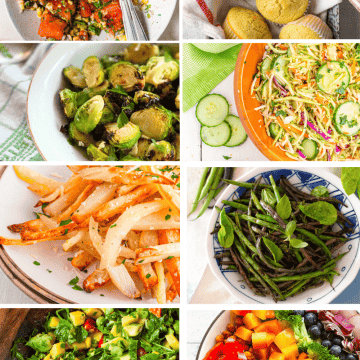



Leave a Reply